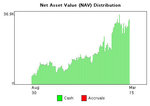Yamato
Legendary member
- Messages
- 9,840
- Likes
- 246
Nice newspapers titles on the Pope here:
Foto Papa Francesco: le prime pagine nel mondo / 1 - Repubblica.it
This is a nice one, for example:

If it weren't for the fact that I don't believe in god, with a pope like this, I might even turn catholic again.
Remember The Mission?
The Mission (1986 film) - Wikipedia, the free encyclopedia
This pope reminded me of that movie, because of his being a Jesuit from South America.
The Mission - Gabriel's Oboe - YouTube
Morricone: Gabriel's Oboe (The Mission) and Main Theme from Cinema Paradiso - YouTube
Foto Papa Francesco: le prime pagine nel mondo / 1 - Repubblica.it
This is a nice one, for example:

If it weren't for the fact that I don't believe in god, with a pope like this, I might even turn catholic again.
Remember The Mission?
The Mission (1986 film) - Wikipedia, the free encyclopedia
The film is set in the 1750s and involves Spanish Jesuit priest Father Gabriel (Jeremy Irons) who enters the South American jungle to build a mission and convert a Guaraní community to Christianity. The Guaraní community above the perilous Iguazu Falls has tied a priest to a cross and sent him over the falls to his death. Father Gabriel travels to the falls, climbs to the top, and plays his oboe. The Guaraní warriors, captivated by the music, allow him to live...
This pope reminded me of that movie, because of his being a Jesuit from South America.
The Mission - Gabriel's Oboe - YouTube
Morricone: Gabriel's Oboe (The Mission) and Main Theme from Cinema Paradiso - YouTube
Last edited:

